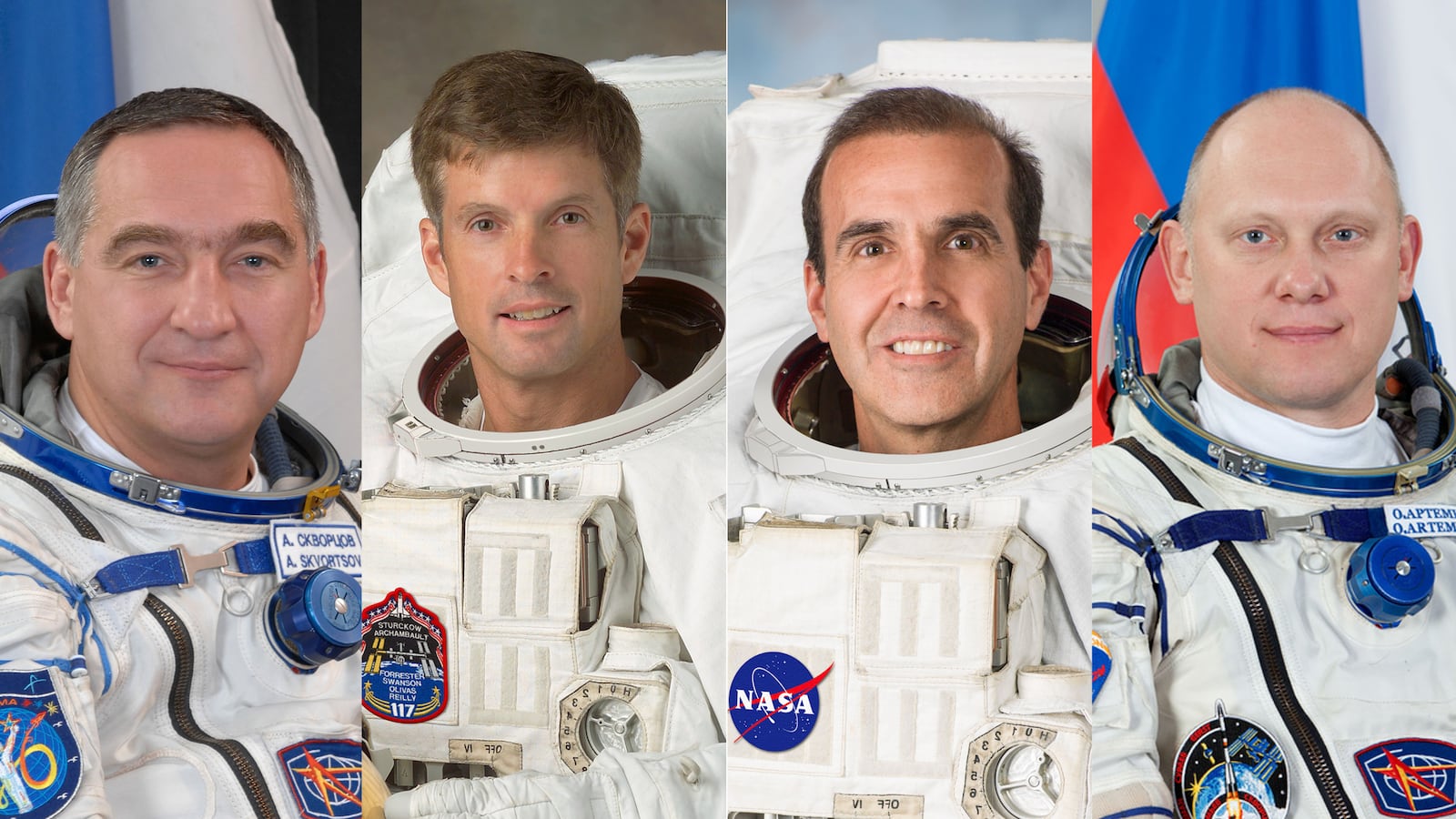The specter of a renewed Cold War is not expected to prevent an American astronaut from blasting off with two Russian cosmonauts aboard a Russian spacecraft from a Russian launch pad next week.

“It is scheduled to go forward,” NASA spokesman Joshua Buck confirmed.
At 5:17 p.m. on March 25, Steven Swanson of Colorado is slated to embark for the International Space Station along with Oleg Artemyev and Alexander Skvortsov in a Soyuz launch vehicle from the Baikonur Cosmodrome in Kazakhstan.
Upon arrival six hours later, Swanson will greet three other men already aboard, fellow American Rick Mastracchio of Connecticut, Russian cosmonaut Mikhail Tyurin and the Japanese commander, Koichi Wakata.
As has been the practice for 13 years of continuous human occupation of the shared space station, the Americans will continue to reside in their section while the Russians keep to theirs.
“There’s a toilet in the U.S. segment and a toilet in the Russian segment,” NASA spokeswoman Susan Anderson noted on Thursday.
But they share maintenance tasks. And, in the way of roommates, they generally socialize at the end of the workday.
“They usually come together in the evening,” said Buck of NASA. “They all eat dinner together. There’s a lot of camaraderie.”
“A meal is the best way to have crew time,” Anderson said.
Anderson reported that tensions between east and west because of Ukraine have not affected life on high.
“Our station is still moving along just like normal,” she said. “What’s going on in space is totally collaborative.”
The station’s goal is one that too often eludes us back on earth.
“In space, it’s all about what’s best for the benefit of mankind,” Anderson said.
Swanson is expected to stay five months on what will be his third trip to the station and he is expected to add to the 27 hours of spacewalks he’s already logged. Mastracchio is scheduled to depart in May, along with the two who arrived with him in November on a Soyuz vehicle that has been docked at the station pending their return to earth.
Since the cessation of the American space shuttle program in 2011, the Russians have the only manned space vehicles. They all blast off from Baikonur, which is also where the Russians launched their first ICBM capable of delivering a nuclear warhead to the U.S. mainland as well as Sputnik, the world’s first satellite. Sputnik signaled the start of the space race, which led to the Americans landing on the moon in 1969.
In the end, the continuing endeavor proved too expensive for both sides. They came together with the International Space Station, the ISS. The first elements were launched in 1998 and Americans began living alongside Russians there two years later.
Since then, more than 200 astronauts and cosmonauts have traveled as one in the solar-powered, dual-toileted craft for more than 2 billion miles, making some 100,000 orbits of our troubled planet.
The cosmonaut presently aloft, Tyurin, has suggested that while such physiological concerns as space headaches and the effects of weightlessness on human tissues merit investigation, the most important aspect of life aboard the ISS to study is the interaction among its occupants.
“If we are studying psychological aspects, they can be used not just in space exploration but can be propagated and applied to human relations in general and are much more in demand in various areas of our human activity, our human life,” Tyurin said in a recent interview posted by NASA.
At times, the interaction between Americans and Russians below has been matched by the harmony above. But of late we seem in danger of reverting to when our relations were symbolized not by the ISS but by ICBMs.
If you despair at the present events on the ground, you can tweet Mastracchio at @AstroRM. Or, go to http://spotthestation.nasa.gov. Type in your country and city and it will tell you when the ISS can be seen in your local time.
On Saturday, the ISS will be visible in Kiev at 4:02 a.m., in Moscow at 4:29 a.m., and in Washington, D.C. at 5:47 a.m.
You can even sign up for automatic email alerts that will tell you when you can lift your spirits along with your eyes by seeing that fast-moving light streak across the dark sky, a glint of hot peace amidst talk of cold war.






